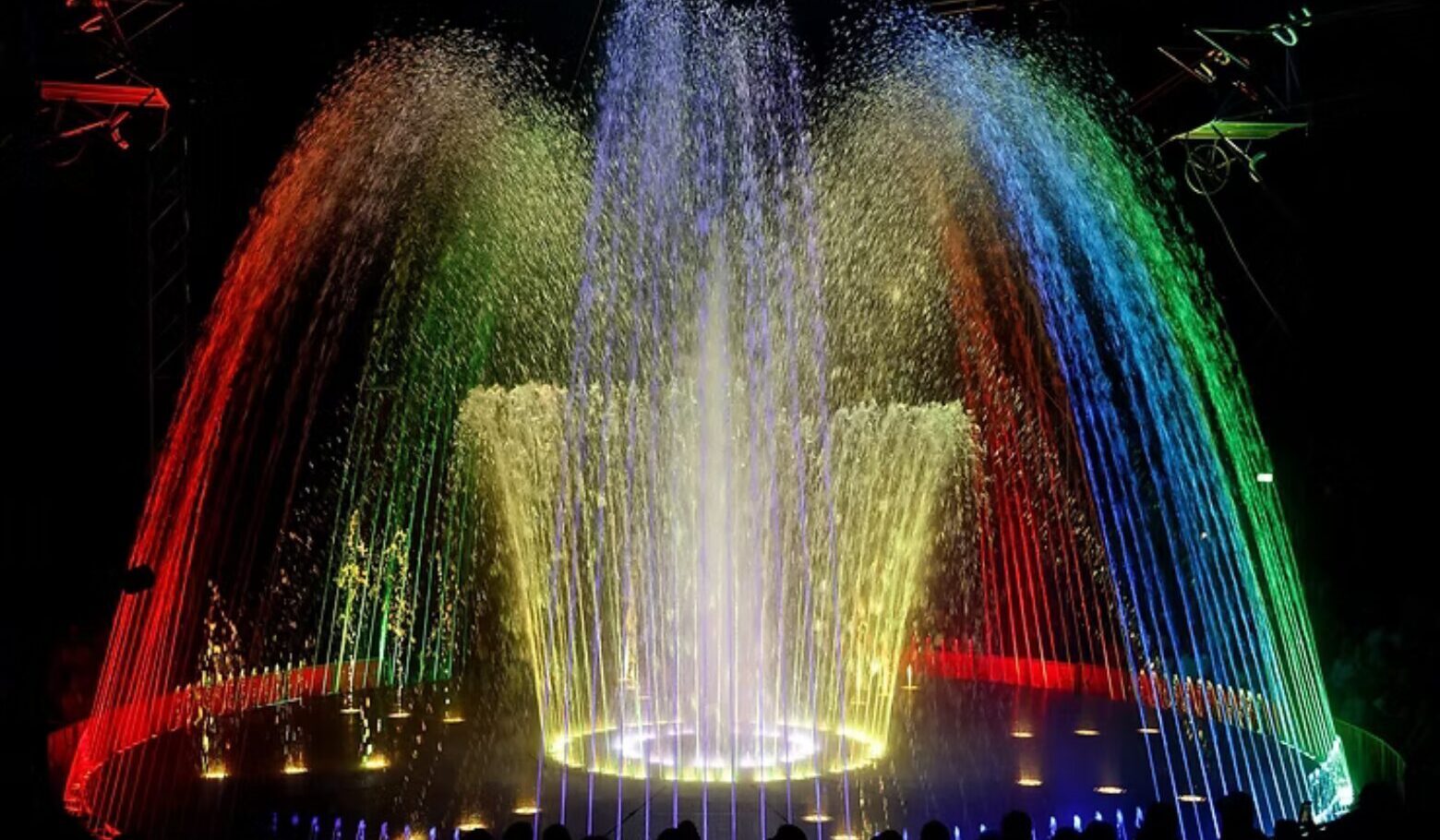Zirkus Charles Knie – With Water Circus to New Success

Who can resist the magic of a big top, erected here today and there tomorrow, becoming a place of wonder and dream for a limited time where there was only an empty meadow before? There’s no question that the classic touring circus is and remains, for me, the flagship discipline of the circus world.
Few countries boast more traveling circus companies than Germany. But the major companies that hire professional artists for their programs and can compete on tour with the quality of the Christmas circuses that are booming everywhere have become rare. Their business model has been undergoing a transformation in recent years. Anyone who wants to tour with high-quality programs needs, more than ever, a compelling concept that stands out from the rest and fits the contemporary audience expectations.
A successful example of a transformation is Zirkus Charles Knie, which has been touring with the water circus concept for four years now – and with great success.

Then a turning point came: the time of the coronavirus pandemic. Today, Sascha looks back on this challenging time as a time of reflection. “On tour, we were always so consumed by day-to-day business that there was little time for reflection and new ideas,” he explains. During the pandemic, touring operations were suspended. Instead, as life around slowly resumed, the company built “Circusland,” a regional amusement park with children’s play areas, a beer garden, and shows, at its headquarters in Einbeck, Lower Saxony.

Before the pandemic, the Zirkus Charles Knie toured with a traditional, animal-rich program. Despite Sascha Melnjak’s continued love for this type of circus, business became increasingly difficult. Audiences increasingly viewed animals in circuses as controversial, media partners and clients for galas became hesitant, and the media was facing backlash. “Our image was damaged,” he recalls, “we had a hard time keeping the large operation running economically.”
The water circus experiment brought about the “turnaround,” as the world of management would put it. On the first tour after the pandemic, they dared to take the water stage on the road. “It was a shortened tour; we didn’t start until June,” says Sascha, “we thought we could somehow manage it and just give it a try.”

Technically, it was a challenge. The stage isn’t really designed for travel. Setting it up takes as long as setting up the tent and the grandstand combined. The technology is prone to errors. Once, a fault occurred in the control cabinet during the entrance, and nothing worked anymore. The problem was found and resolved just in time so that the performance could go ahead as planned.
But the effort was worth it; the experiment was an immediate success. Today, Sascha Melnjak is confident that his new concept is reaching audiences that previously avoided the circus. There are more young people in the audience, and word of mouth is much more effective. In the past, visitors were also enthusiastic, but not with this euphoria. And that is a prerequisite for increasing attendance throughout a tour performance: “The concept today guarantees that we’ll be sold out by the last shows in a city.”
Part of the success is certainly that from the very beginning, they didn’t just install a water stage, but changed the entire way the program is produced. Whereas earlier shows used to be put together a week before the premiere after the artists arrived, today ideas for the following year’s show are developed, costumes commissioned, and music composed as early as the summer before the tour starts. Everything follows an opulent revue style.

Charles Knie is deliberately not advertising the point that they are turning away from circus with animals; this is important to Sascha Melnjak. Animals still play a role in the show; since the new concept began, Laura Urunova has performed with her parrots and dogs. This is apparently more accepted than working with large animals. And yet, the lack of horse stables and animal tents behind the scenes has had an impact on the circus. Something of this special world has been lost, he says; the circus grounds have become more sober. “With the animals, it was somehow more complete,” Sascha Melnjak notes, not without a touch of wistfulness.

And yet, it was the right decision for him – and one that will continue for some years to come. A lot of investment has been made in elaborate costumes for this season. For the investment to pay off, the show must continue. What will happen after that is not yet clear. But for Sascha Melnjak, the last few years have confirmed his certainty that the touring circus has a future.
This article was originally published at Scenic Circus.
Main Image: The water stage of the Zirkus Charles Knie in full function (c)Zirkus Charles Knie
Editor's Note: At StageLync, an international platform for the performing arts, we celebrate the diversity of our writers' backgrounds. We recognize and support their choice to use either American or British English in their articles, respecting their individual preferences and origins. This policy allows us to embrace a wide range of linguistic expressions, enriching our content and reflecting the global nature of our community.
🎧 Join us on the StageLync Podcast for inspiring stories from the world of performing arts! Tune in to hear from the creative minds who bring magic to life, both onstage and behind the scenes. 🎙️ 👉 Listen now!
